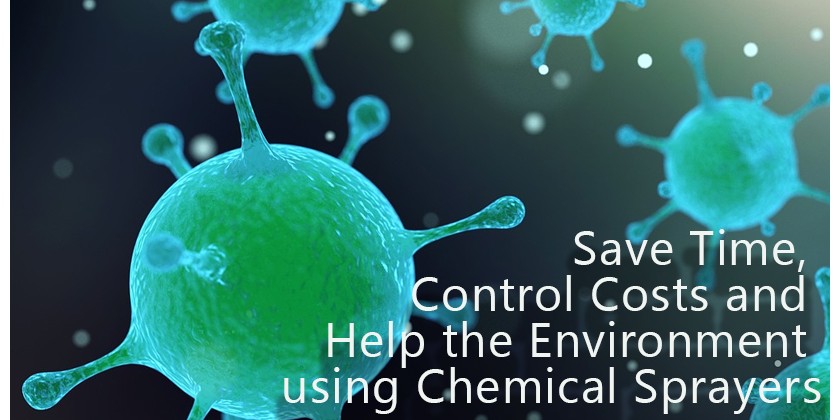
Chemical sprayers have been around for decades and are an indispensable tool for landscapers and pest control companies, but these sprayers are now making their way into the cleaning community. Among the reasons are the operator benefits, solution consistency and time saving benefits gained when using a pressure sprayer, versus a hand pumped trigger sprayer. This not only helps the bottom line, but helps the environment too!
Chemical sprayers are beneficial for many types of sanitation operations. From mold and mildew control, to antimicrobial applications, pressure sprayers disperse product quickly and effectively to the desired areas.
MOLD & MILDEW CONTROL:
Tiny black spots on the surface of flooring, walls or tile are the first sign of a type of mold, also known as mildew. Mold doesn’t just look unsightly, it can be hazardous to your health!
The best method for killing mold is to eliminate it before it becomes hard to manage. These fungi thrive anywhere there is a moist environment and can begin growing on damp surfaces within 24 to 48 hours after exposure. Even worse, mold will continue to grow until steps are taken to eliminate the source of moisture.
After addressing and resolving the source of the moisture, mold removal formulations should be applied to kill the mold spores. Regular treatment is also needed for areas that stay moist (such as bathrooms) and foster an environment where mildew can flourish.
Chemical Sprayers are effective tools for dispersing mold-killing solutions to large and hard-to-reach areas. Specialty nozzles allow the user to cover large areas with a fan spray, or target crevices with a jet steam nozzle. Because pressure sprayers allow the user to easily target specific locations, less product can be used, which saves money and benefits the environment.
ANTIMICROBIAL APPLICATIONS:
Hospitals, clinics, schools, and other public spaces can be hotbeds for all sorts of illness producing microorganisms. Regular treatment with antimicrobial formulations can kill or slow the spread of these bacteria and viruses.
Spraying is an effective method for applying antimicrobials to large surfaces, such as urinals, behind toilets, sinks and walls. Even very large areas, such as stadium seating and handrails can be easily sanitized using a pressure sprayer with a wand. Product can be applied quickly, and careful coverage can be measured by adjusting the nozzle spray settings.
Pressure sprayers are available in multiple sizes from small, handheld models, to large, battery powered backpack styles. Specialty seals accommodate alkaline, acidic, and even foam solutions.
Other Benefits Include:
- Tanks can hold more product, which means less filling and less spilling
- Pressure sprayers require MUCH less effort than trigger sprayers
- Surface area coverage is faster with a pressure sprayer
- Concentrates can be used, saving money over premixed products
- Fewer product bottles littering the landfills
What’s more, a single sprayer can handle many types of mixtures, from natural “green” products to industrial grade solutions. Ensure that you have the correct seals and nozzles for the products you are using and you will be on your way to reducing time and improving outcomes.
For more information on SOLO sprayers see: us.solo.global
